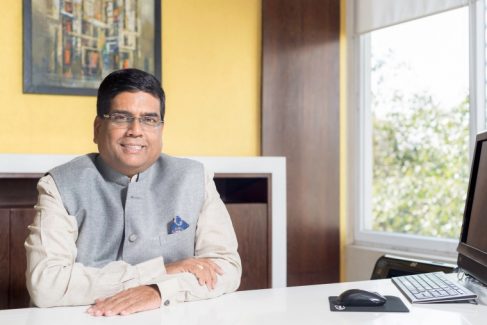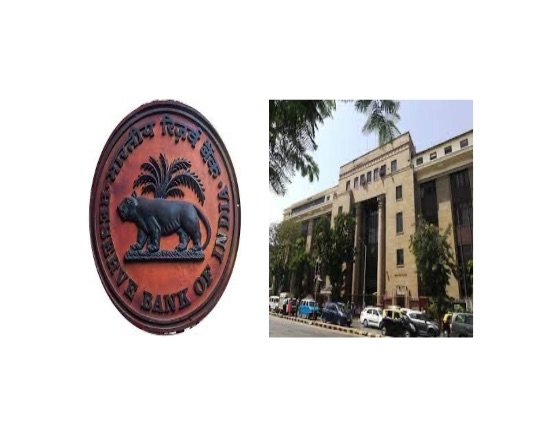MUMBAI: RBI In its monetary policy for the year 2021 which was announced on 8th December remains unchanged. The central bank kept the repo rate 4.0 per cent and the reverse repo rate unchanged at 3.35 per cent. The announcement of The Monetary Policy Committee (MPC) is in the context of fresh threats from the Omicron variant and which can have an impact on the Indian economy while ensuring that inflation remains within the target going forward. The MPC statement says that. These decisions are in consonance with the objective of achieving the medium-term target for consumer price index (CPI) inflation of 4 per cent within a band of +/- 2 per cent, while supporting growth.
Comments From Industry Experts:
Sarvatra Technologies: Mandar Agashe, Founder, Vice-Chairman and MD

This year interestingly, despite record purchase transactions during Diwali, cash in circulation did not increase, a rare occurrence since 2014 clearly indicating – digital payments have become the mode of choice for masses. Considering more than 50% of the transactions conducted on UPI are of value below Rs. 200, low value transactions, there is significant utilisation of system capacity and resources, leading to customer inconvenience owing to connectivity issues and transaction failures. Therefore enabling small value transactions through an ‘On-device’ wallet in UPI app will not disturb the banking system every time a transaction is conducted, which will help conserve banks’ system resources. Additionally facilitating UPI-based digital payment solutions on feature phones will promote wider digitisation offering a quantum leap in driving small value transactions especially in the tier II, III markets.
Today UPI is the single largest retail payment system in the country and has risen by almost 70 times in the last 4 years growing into an institution itself. Therefore as the industry has matured the current move of upscaling the transaction limit for payments from 2 lakh to 5 lakh will help encourage retail investors to comfortably indulge in high-value transactions such as Retail Direct Scheme and IPO applications.
Additionally, the paper seeking feedback on issues related to charges applicable on digital payments will further drive collaboration among stakeholders to resolve challenges and take timely measures to make digital transactions affordable to end users and economically remunerative for service providers.
PayNearby: Anand Kumar Bajaj, Founder, MD and CEO

The pandemic boosted the need for contactless payments and led to the increased adoption of UPI as the preferred digital mode of payment, even at the last mile. Today, UPI has become the single-largest retail payment system in the country in terms of volume of transactions, signifying its wide acceptance, particularly for small-ticket transactions. The recent announcement to enhance the transaction limit for payments through UPI from Rs 2 lakh to Rs 5 lakh will fuel the use of UPI by retail investors. This move will further deepen the reach of digital payments in the country and make them more inclusive, catapulting us towards a less-cash economy. In addition, the idea to launch UPI-based payment products for feature phone users will offer ease of transactions for consumers, facilitate greater participation of retail customers across various segments, and enhance the capacity of service providers.
Ramani Sastri – Chairman & MD, Sterling Developers Pvt. Ltd.

The RBI’s decision on keeping the repo rate unchanged will certainly bode well for all interest-sensitive sectors ahead of the New Year when the economy is on its road to recovery. For home buyers, this decision will help reinstate confidence and further access to affordable home loans and help foster housing demand. It has also helped the sector to regain its strength as well as stay afloat during these unprecedented times. The homebuyers should take advantage of the current situation because there are chances that the prices might go upwards later on account of reducing supply and the pressure of increased costs of raw materials. There has been a fundamental change in buyers’ expectations and attitude towards homeownership, which has already resulted in the residential real estate sector perform exceedingly well across all segments in the post Covid era. We are also seeing a lot of first-time home buyers, who were not able to reach a decision earlier are eager to conclude the deal now. Real estate is definitely an asset class that one must remain invested in today and in the long term and looking ahead, we do believe that markets will see sustained growth. With economic recovery on a positive note, growth needs to be carefully nurtured. This can be done by giving a fillip to the economy by incentivizing real estate. With improved GDP growth estimated in the near future, we expect that the real estate sector will contribute a substantial share to overall economic development.
Suman Chowdhury, Chief Analytical Officer, Acuité Ratings & Research

“While we had expected a partial likelihood of a modest hike in reverse repo rate in the Dec-21 MPC policy meeting, the central bank has stuck to its principle of ‘gradualism’ since the downside risks to a durable growth trajectory have clearly increased due to the spread of a new Covid variant. MPC has retained the FY22 growth forecast at 9.5% but has slightly reduced the Q3FY22 GDP forecast to 6.6%, reflecting concerns on the global growth uncertainty along with high commodity prices.
What is worthwhile to note is RBI’s dovish stance on inflation; although it has highlighted its concerns on the high core inflation levels and the input cost pressures, it has continued to retain its average headline CPI forecast at 5.3%. RBI continues to take comfort from the tax cuts in retail fuel and the steps that the government has taken to moderate prices in food categories such as edible oil and pulses. We, however, believe that the inflationary pressures are likely to be higher in the next few quarters if consumption demand picks up in a steady manner, given the expectations of continuing supply constraints in some sectors.
RBI, nevertheless, has continued to focus on ‘rebalancing of liquidity’ as was expected. VRRR auction will continue to be the primary tool for liquidity management and the auction amounts are set to go up higher to Rs 6.5 lakh Cr – Rs. 7.5 lakh Cr in Dec-21. At the same time, the auctions will have a higher proportion of 28 days vis-à-vis the primary tenor of 14 days. Slightly more steps have been taken to normalize the excess liquidity by reducing the additional quantum that was eligible under MSF. Further, banks have been permitted to prepay any their TLTRO withdrawals to optimize their liquidity position. Interestingly, there has been no guidance on the rate trajectory, even on the reverse repo front. This makes it difficult for us to predict the next steps on the yield front.”
Sandeep Runwal – President, NAREDCO Maharashtra and Managing Director, Runwal Group

“The RBI has always taken a proactive stance to ensure liquidity in the past few months, and has continued it is accommodative policy stance amid the renewed Covid threat from the Omicron variant. It is imperative that low mortgage rates would continue, at least till the end of the year. This will provide required fuel for the growth of the economy along with the real estate industry to which several other allied sectors are linked with. We at NAREDCO have already urged the State Government to reconsider their decision and reinstate the stamp duty reduction for another year so as to encourage home buyers and invest in their dream homes.”
Shraddha Kedia-Agarwal, Director, Transcon Developers

“RBI maintaining status quo on key policy rates was expected given the inflationary concerns in recent months. The decision will help to sustain liquidity for some period amid the rising fear due to the new Omicron variant of Covid-19. The low interest rates for the last few months has already given a boost to the real estate sector upticking the demand in the last few quarters and enhancing the confidence of the homebuyers. The decision will also help in sustaining economic stability as well as keep the real estate sector stay afloat during these unprecedented times.”
Pritam Chivukula, Co-Founder & Director, Tridhaatu Realty and Hon. Secretary, CREDAI MCHI

“We welcome the RBI’s decision to continue with their accommodative stance keeping in mind the economic uncertainty due to the new COVID-19 variant Omicron. The low interest rates have been a crucial factor in the revival of the demand in the real estate sector. The sector saw a good festive season on the back of rock-bottom interest rates on home loans along with festive offers from good developers. The buyers are already coming back to the market and we feel that this might be the last opportunity for the homebuyers to purchase property with low interest rates before RBI decides to hike it in their next policy announcement. Also, to keep the prices down on the account of rise in raw materials prices will be a huge challenge in front of the developers.”
Kaushal Agarwal – Chairman, The Guardians Real Estate Advisory

“The RBI and the MPC’s decision to maintain an accommodative stance amid global scare due to new coronavirus variant Omicron was very much expected. Their approach towards tackling the situation created by the pandemic and steps taken to help revive the economy will go down in history as being one of the finest. The various policy reforms along with the all-time low housing loan rates have given the much-required fillip to sales activity in the last few quarters. The all-time low rates regime has boosted the housing demand and helped the economy to get back to the pre-COVID levels.”
Bhushan Nemlekar, Director, Sumit Woods Limited

“The RBI’s decision to maintain its accommodative stance was on the expected lines in light of the rising cases due to the Covid-19 new variant Omicron and its potential to cause the on-going economic recovery to stumble. The prevailing low home loan rates are already enticing for homebuyers which has immensely benefited the real estate sector. The Government will continue taking affirmative measures as long as it is necessary to revive the economy and alleviate the Covid-19 impact.”






